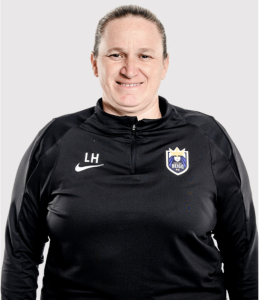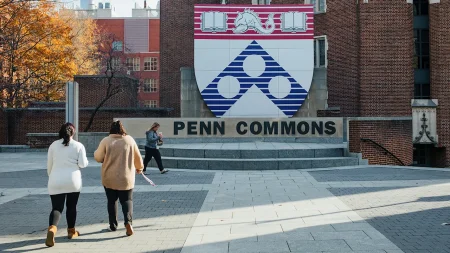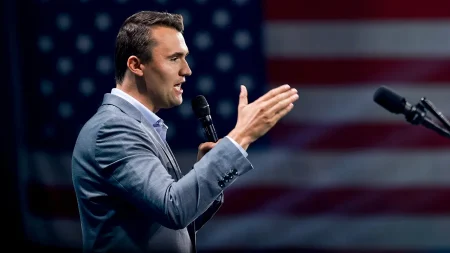Finding Friendship Amid Loss: A Ukrainian Child’s Journey to Healing in the Mountains
The Devastating Toll of War on Ukraine’s Youngest Citizens
When 12-year-old Maksym Palamar boarded the bus leaving his hometown in eastern Ukraine, he carried with him more invisible burdens than any child should bear. Three months earlier, Russian forces had destroyed his family’s apartment building in Kharkiv, sending them fleeing to the relative safety of his grandmother’s home. The journey marked just one chapter in an ongoing saga of displacement that has defined childhood for millions of Ukrainian children since Russia’s full-scale invasion began in February 2022. For Maksym, war didn’t just mean the loss of his home and neighborhood – it claimed his father, who died defending their country, and scattered his friends across Europe and beyond. “I remember the sound of the explosions,” Maksym said softly, his eyes focused on the distance rather than on the present. “They started at night, and my mom was crying. We had to leave everything behind.” According to UNICEF estimates, over 1.5 million Ukrainian children have been displaced within the country’s borders, while another 2 million have fled to neighboring nations. Behind these staggering statistics are individual stories of young lives upended – schooling disrupted, family connections severed, and the psychological wounds of witnessing violence firsthand. For these children, finding normalcy amid chaos has become perhaps the most challenging quest of their young lives.
A Summer Camp Initiative Offers Respite from Trauma
Against this backdrop of national tragedy, a remarkable initiative has emerged in Ukraine’s western Carpathian Mountains, far from the front lines. Camp Svitanok, meaning “dawn” in Ukrainian, represents a collaboration between international humanitarian organizations and local volunteers determined to provide respite for children traumatized by the ongoing conflict. The program specifically targets children who have lost parents to the war or experienced significant displacement. “We created this space because these children need more than just food and shelter – they need to rediscover joy,” explained Olena Kovalenko, the camp’s director and a child psychologist who previously worked with survivors of the 2014 conflicts in eastern Ukraine. “Here, they can be children again, not just victims or refugees.” The camp’s location was strategically chosen – nestled among pine-covered hills nearly 700 kilometers from the nearest active fighting, its natural beauty provides a stark contrast to the destruction many campers have witnessed. With accommodations for 120 children aged 8-16 during each two-week session, the program combines traditional summer camp activities with specialized trauma-informed care. International funding ensures that families pay nothing, removing financial barriers for those already struggling with war’s economic fallout. For Maksym and others like him, the invitation to Camp Svitanok represented something precious in a time of profound uncertainty – a temporary escape from air raid sirens and an opportunity to connect with peers who understood his experiences without explanation.
Building Connections Through Shared Experiences
Maksym’s first days at camp unfolded with the hesitancy typical of any child in an unfamiliar environment, amplified by the emotional armor many war-affected children develop. “He barely spoke during the first group activities,” recalled Andriy Boyko, a 24-year-old counselor and former teacher from Kyiv. “He would participate physically but remain emotionally distant.” This pattern is common among children who have experienced significant trauma, according to Dr. Iryna Vashchenko, a psychiatrist who consults for several humanitarian programs in Ukraine. “Children who have lived through war often develop protective psychological mechanisms – withdrawing socially is one way they maintain control in a world that has proven unpredictable and dangerous,” she explained. The breakthrough for Maksym came unexpectedly during a team-building exercise involving a challenging ropes course. Paired with 13-year-old Danylo, another boy who had lost his father in combat, Maksym found himself needing to communicate to navigate the obstacles. “I saw something change when they had to trust each other to complete the course,” Boyko said. “They started talking – first about the task, then about their hometowns, and by dinner, they were sharing stories about their fathers.” This connection formed the foundation for what would become Maksym’s growing circle of friends. Within days, he had formed bonds with several other boys and girls with similar experiences, their shared understanding creating a shorthand that allowed them to discuss their losses without the burden of explanation required with those who hadn’t lived through war. Camp counselors observed that these organic connections often proved more immediately therapeutic than formal counseling sessions, though both played crucial roles in the healing process.
Therapeutic Activities Disguised as Summer Fun
Camp Svitanok’s daily schedule deliberately balances structured therapeutic interventions with the carefree activities that define traditional summer camp experiences. “We incorporate therapy into everything we do, but we never call it therapy to the children,” explained Maryna Ponomarenko, the camp’s activities coordinator. “For instance, art projects allow for emotional expression, team sports build trust, and nature hikes promote mindfulness – all therapeutic goals disguised as fun.” This approach reflects growing evidence that trauma recovery for children often happens most effectively through embodied experiences rather than solely through talk therapy. For Maksym, swimming in the mountain lake became an unexpected source of comfort. “In the water, I feel light,” he told his counselor during their third day at camp. “I can close my eyes and not think about anything except floating.” Recognizing this breakthrough, staff ensured swimming became a regular part of his group’s schedule. Other activities specifically designed to address war trauma included storytelling workshops where children created tales with characters overcoming challenges, music sessions that incorporated traditional Ukrainian folk songs to reinforce cultural identity, and carefully supervised campfire discussions where older children could voluntarily share their experiences if they wished. Mental health professionals remained on-site throughout, available for individual support and monitoring each child’s emotional state. “We watch for signs that an activity might be triggering for a particular child,” Ponomarenko noted. “Each has different sensitivities – some struggle with loud noises that remind them of shelling, others with separation from remaining family members. Our approach is always to offer alternatives rather than force participation.”
Small Victories and Moments of Transformation
By the camp’s midpoint, subtle but significant changes had become evident in many of the children, including Maksym. Counselors documented these transformations in nightly reports, noting improvements in appetite, sleep patterns, social engagement, and emotional expression. “I heard Maksym laugh today – really laugh,” one staff member recorded on day eight. “It happened during the talent show preparation when his group was creating a comedy skit. He not only participated but contributed ideas.” Such moments, while seemingly ordinary in typical childhood contexts, represented profound healing milestones for children whose capacity for joy had been compromised by trauma. Parents and guardians, connected through periodic video calls, often noticed these changes even through brief digital interactions. “My sister called me in tears after speaking with Maksym,” shared Olha, his maternal aunt who had been helping care for him since his father’s death. “She said, ‘I saw my son again, not just the shell of him that’s been living with us.’ That alone made the separation worthwhile.” The camp’s impact extended beyond emotional healing to practical resilience skills. Children learned emergency preparedness without inducing fear, practiced stress-management techniques disguised as “energy games,” and developed peer support networks that could continue virtually after returning home. Perhaps most significantly, many began discussing futures again – a cognitive shift from the survival-focused thinking that trauma often induces. “Maksym told me he might want to be an architect someday,” his counselor Boyko reported. “He said he wants to rebuild the beautiful buildings that were destroyed. That’s the first time he’s mentioned any future plans since arriving.”
Creating Lasting Connections in a Fragmented World
As the two-week session approached its conclusion, camp staff focused increasingly on transition planning – helping children maintain the connections and coping strategies they’d developed once they returned to their current living situations. “The challenge is sustainability,” Director Kovalenko acknowledged. “We can create this safe bubble for two weeks, but the war continues, and these children return to difficult circumstances.” To address this reality, Camp Svitanok implemented several continuity measures. They created private social media groups where campers could maintain contact under counselor supervision, scheduled monthly virtual reunions, and provided each child with a personalized “resilience toolkit” – a physical package containing items like journals, stress-relief tools, photos of their camp friends, and instructions for techniques they had learned. For Maksym, the prospect of leaving brought complicated emotions. “I don’t want to go,” he confessed to Danylo the night before departure. “At home, no one really understands.” His friend’s response reflected wisdom beyond his years: “We don’t have to be together to still be together.” This sentiment captured the camp’s ultimate achievement – creating bonds that could transcend physical separation and provide ongoing support. On the final morning, as buses prepared to transport children back to their temporary homes across western Ukraine, counselors observed something remarkable – children exchanging contact information, making plans to meet if possible, and offering comfort to those who were anxious about returning. Maksym stood in the center of a group of six new friends, his posture noticeably different from the withdrawn boy who had arrived two weeks earlier. “This isn’t really goodbye,” he told them with newfound confidence. “It’s just until next time.” As the buses departed and Camp Svitanok prepared for the next group of children, staff members took a moment to acknowledge both the progress made and the enormous challenges that remained. “We can’t end the war for these children,” Kovalenko reflected, “but we’ve shown them they aren’t alone in facing it. Sometimes that’s enough to keep moving forward – knowing someone else understands your journey.”










